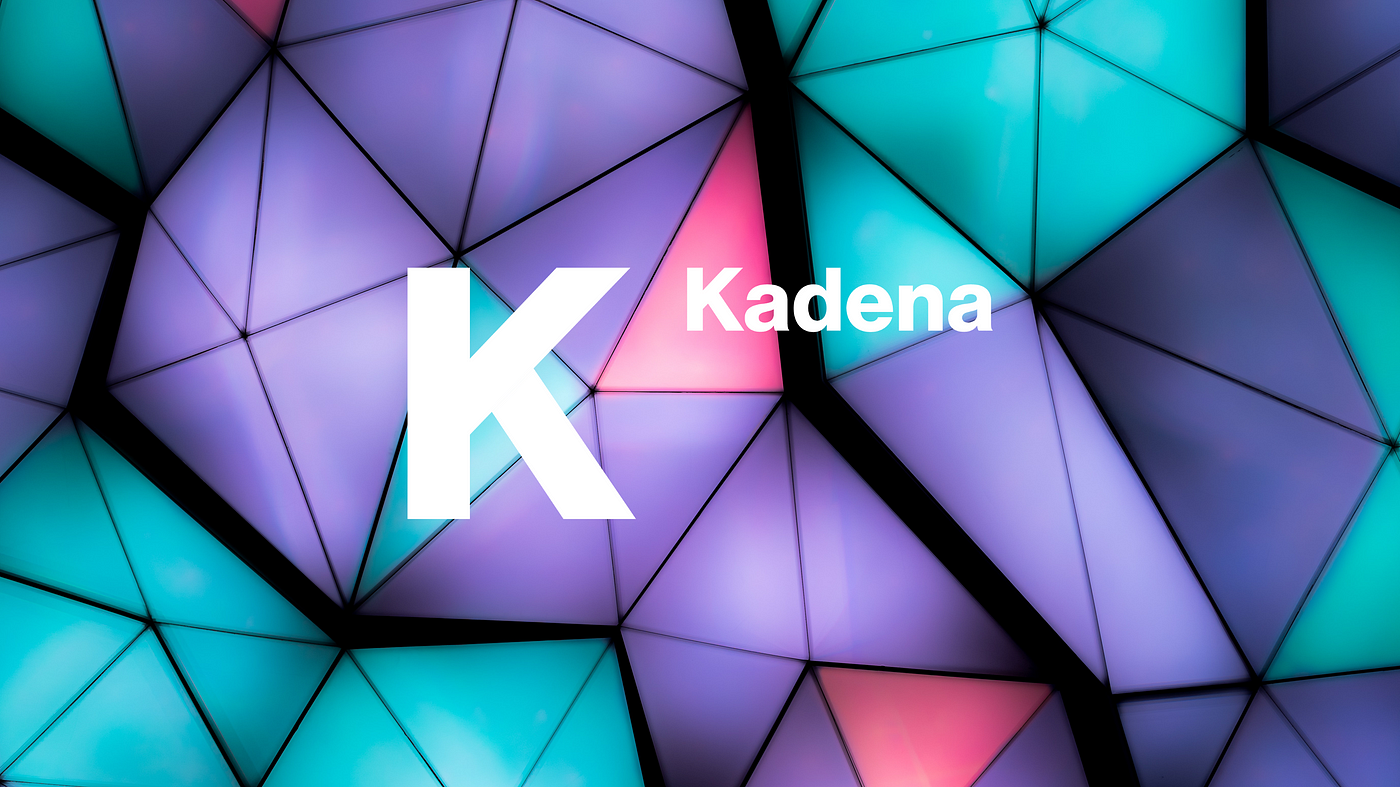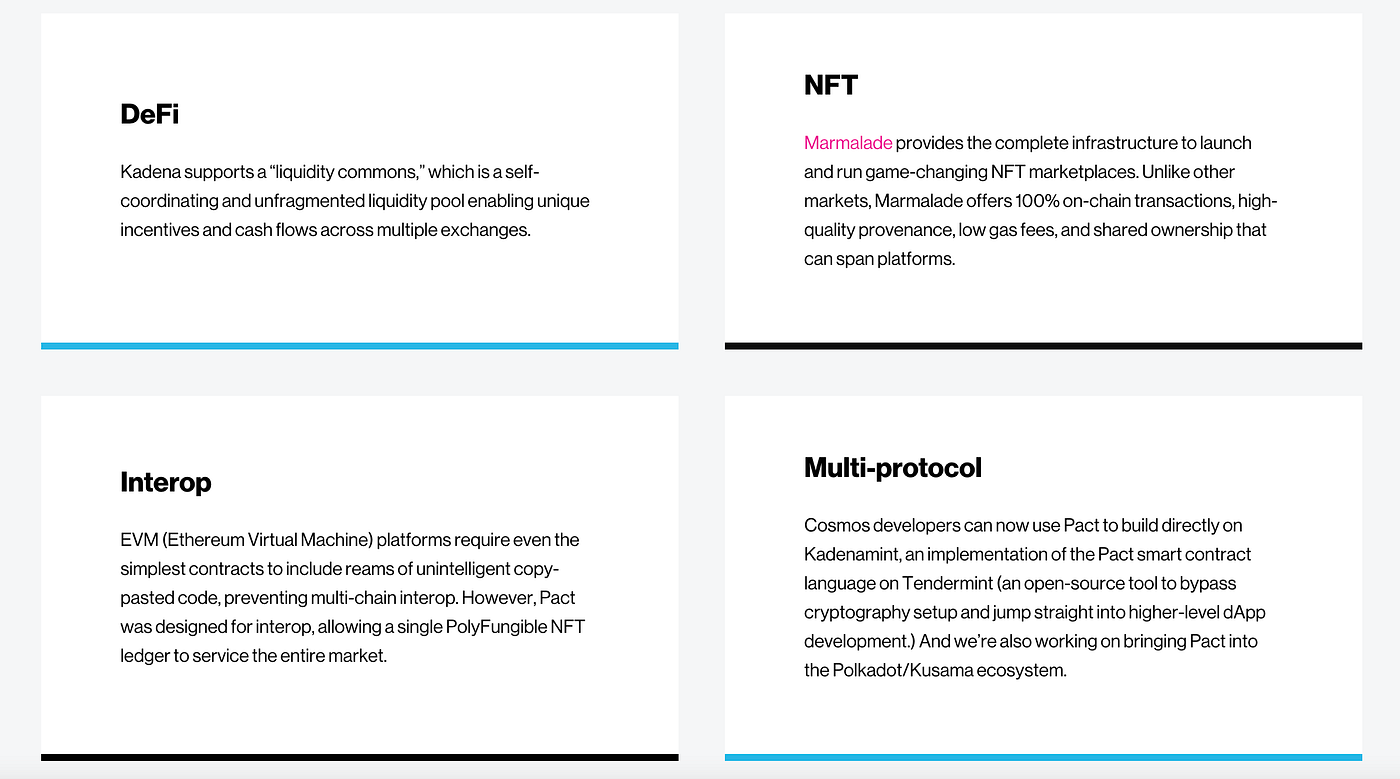There has never been so much buzz around blockchain technology. While the benefits of blockchain technology are often mentioned, the downsides and weaknesses are often overlooked. One of those weaknesses is the long processing time of blockchains. And that is exactly where Kadena with its KDA Coin comes into play.
Still, Kadena has become a “fallen angel” recently. As a result, the popularity and the market capitalization of this cryptocurrency are plummeting.

This trend is most likely caused by the lack of a strong ecosystem. There are hardly any applications developed in the Kadena network.
Rightly so or interesting entry opportunity?
Kadena aims to significantly reduce the processing time of blockchains and thus ensure better scalability and lower transaction costs. With a block time of only around 1.5 seconds, Kadena is faster than average. The benchmark Ethereum is very slow and expensive due to the use of the proof-of-work mechanism.
Kadena is a proof-of-work blockchain that allows developers to create optimized decentralized applications. Kadena was developed as an alternative to Ethereum and was founded by Stuart Popejoy and Will Martino, both of whom have worked for major US bank JPMorgan. Interesting to know: Popejoy and Martino were also the ones who developed JPMorgan’s first blockchain. Namely, the internal token of JP Morgan, which is used to move trillions of dollars every month.
In 2019, the initial coin offering took place. In 2022, Kadena ranks #100 in terms of market capitalization, with around USD 400 million. Hence, a rather small project.

A distinctive feature of the project is the fact that Kadena contains an entire ecosystem. With Chainweb and Kuro, the project consists of two blockchains, which are primarily intended to solve the problems of speed, costs, sustainability, and scalability of the classic blockchains.
A really interesting approach.
Chainweb is the layer 1 blockchain on which transactions can be made, while developers can build their applications on Kuro, the second-layer blockchain.
Chainweb
Chainweb uses the proof-of-work algorithm. However, Kadena splits its proof-of-work into different mining chains. These can work on the transaction in parallel and thus process a larger number of transactions faster. A double-check of the individual blocks promises security.
Kuro
The layer 2 blockchain at Kadena is called Kuro. This is a private blockchain that is designed for the creation of smart contracts, for example. Kuro relies on the Byzantine Fault Tolerance algorithm, which is specifically designed for fast processing. BFT is known for high scalability and is largely responsible for the fast processing of transactions on the Layer 2 blockchain. Fast means that blocks can be created within 1.5 seconds.
On Kuro, developers use the Pact programming language to develop various dApps. Around 500,000 transactions can be processed per second on the Kuro network.
- Fast processing time. One of the biggest problems with blockchains like Bitcoin and Ethereum is the transaction processing time. There are more transactions than the network can process. Kadena has solved this problem and can process almost half a million transactions per second. This is faster than average and enables the processing of several hundred thousand transactions per second, among other things.
- Low transaction fees. Users pay low transaction fees to conduct a transaction on the Kadena network.
- Support for smart contracts and NFTs. Kadena’s blockchain supports smart contracts and NFTs. This allows developers to create dApps suitable for decentralized finance (DeFi).

The poor performance in recent months can be attributed to the lack of a strong ecosystem. There are hardly any applications developed in the Kadena network.
According to DeFi Llama, the network has only four DeFi apps: Babena, Kaddex, Anedak, and KDLaunch. They have a total value of locked tokens (Total Value Locked) of $2.5 million. Babena dominates with 88.5%.

On their own website, on the other hand, Kadena lists about 46 projects.
Certainly, the biggest and most well-known competitor of Kadena is Ethereum. The Ethereum blockchain is considered to be powerful but has to deal with the “problem” of comparatively long processing times. There are also second-layer solutions like Polygon to solve this problem. Furthermore, Ethereum is supposed to migrate to the Proof Of Stake algorithm this year, which would result in a significantly higher speed.
Not to mention the whole variety of Ethereum-competitors. Some analysts predict that KDA will soon no longer be able to clearly distinguish itself from these competitors.
Another rival is the Solana project. It is a decentralized financial project and ecosystem, which is therefore directly competing with Kadena. Solana is particularly appreciated for its speed and enables high scalability.
Avalanche’s project also promises fast growth and processing. Currently, more than 4,500 transactions can be processed per second, and the trend is rising. Avalanche utilizes different nodes to process multiple transactions in parallel.
Read also: Avalanche: Faster & Cheaper Ethereum Challenger $AVAX
Passive Income With DeFi: 70% Returns and 30$ Signup Bonus
The platform Cake DeFi provides an easy and user-friendly way to generate passive cash flow on your crypto portfolio. This is done in three different ways, called lending, staking, and liquidity mining. All you have to do is to sign up for the platform, top-up money via credit card or transfer cryptocurrencies, and put your assets to work. Read more.
You receive a 30$ signup bonus upon your first top-up with the following referral code:
Another way to earn passive income with crypto is Curve in combination with Crypto.com Cashback. Take a look at: This Is How You Can Add Every Card To Google/Apple Pay
KDA is Kadena’s utility token and is used as a payment method for the Kadena ecosystem. Users can use it to pay their transaction fees. By mining Kadena, on the other hand, they help to ensure the security of the network and receive KDA in return. This way, it is ensured that transactions are verified and can be added to the blockchain as new blocks. A total of one billion KDA tokens will be generated. A little less than 20 percent of them, around 171 million KDA, are currently in circulation.
As mentioned, Kadena’s ICO took place in 2019. 70% of all tokens can be generated by miners. 20% of all tokens are reserved for the project and intended, for example, to stabilize the network. 7% of the total tokens are dedicated to the start-up investors, and another 3% are distributed among the employees.
How To Buy $KDA?
For newcomers, I’d personally recommend crypto.com* as an easy-to-use trading platform with a user-friendly interface and step-by-step instructions. Crypto.com*offers a whole ecosystem with a credit card (including crypto-cashback), staking, and many more features. Read more here.
For anyone seeking a more advanced platform with lower fees, give BitForex* a try!
In theory, the project offers many solutions to “conventional” blockchain problems.
The biggest advantage of Kadena is the impressive speed with which transactions can be processed. Such a feature is important in numerous sectors and industries. The next developments in the roadmap could also lead to a positive development of the project, as they, for example, include the launch of a native NFT standard called Marmalade.

In addition, the developers behind the project announced plans to launch a testnet to bridge between Kadena and the Ethereum Virtual Machine (EVM) and a bridge between Kadena and Cosmos, facilitating interoperability with other popular blockchain ecosystems.
However, Kadena has to contend with strong competitors. With Avalanche, Fantom, Solana, and Cardano, among others, the place is highly contested. And Kadena can’t secure its own identity at the moment.




